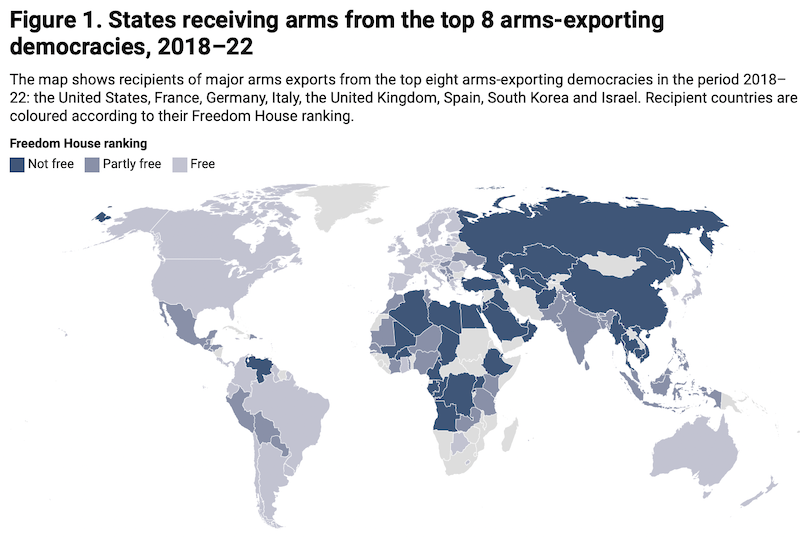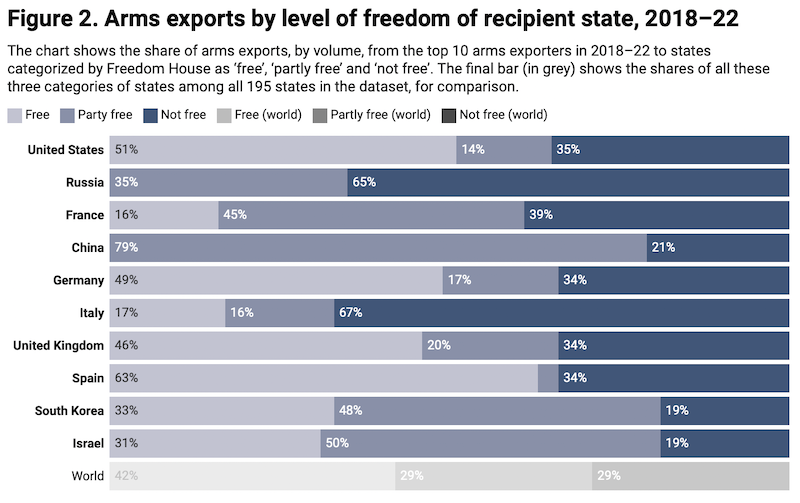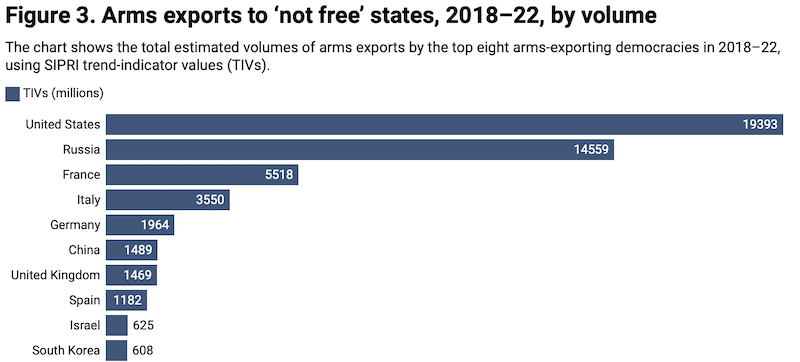US President Joe Biden has so often reiterated a narrative that positions ‘democracy vs autocracy’ as the defining struggle of our time that many have identified this framing as core to the ‘Biden doctrine’. However, a string of observers have voiced concern about what they perceive as a disconnect between the foreign policy rhetoric of the Biden administration and its foreign policy practice. Although most other Western powers have not adopted such strong language regarding systemic competition, many have nonetheless participated in the Summits for Democracy that the White House held in 2022 and 2023 and signed the outcome statements.
Much of the criticism has come from the Global South. For instance, in a recent issue of Foreign Affairs magazine, Matias Spektor, Professor of International Relations at Fundação Getulio Vargas in São Paulo, writes that ‘the developing world … sees hypocrisy in Washington’s framing of its competition with Beijing and Moscow as a battle between democracy and autocracy,’ particularly as ‘the United States continues to selectively back authoritarian governments’. He claims that many in the South ‘view the West’s pro-democracy rhetoric as motivated by self-interest rather than a genuine commitment to liberal values.’ Similarly, Nirupama Rao, a former foreign secretary of India, argues that while ‘the West … claims that its foreign policy is guided by human rights and democracy,’ it ‘routinely cut[s] deals with violent autocracies.’
One area in which commentators see this disconnect playing out most starkly is in Western countries’ arms exports. This blog explores what light SIPRI data on arms transfers can cast on the discussion.
The top arms exporters and recipient states: A look at the data
The SIPRI Arms Transfers database compiles data on imports and exports of major arms. According to the database, the USA, France, Germany, Italy, the United Kingdom, Spain, South Korea and Israel were the top eight arms-exporting democracies in 2018–22. Along with Russia (ranked second) and China (ranked fourth), they also comprise the top 10 exporters for the period.
None of the eight democracies under consideration has made any public commitment to condition arms exports based on the civil and political rights records of recipient states or on their political regime type. Rather, their export restrictions are oriented more towards preventing exports of arms that are likely to be used in ‘serious violations’ of international human rights law and violations of international humanitarian law. Thus, exporting arms to autocratic states does not, in itself, violate any explicit policy commitments, as weapons involved in transfers generally are assessed as unlikely to be used in serious violations of human rights and international humanitarian law. Nevertheless, in this regard the arms export practices of the USA and some of its major allies could be perceived as being misaligned with the idea that the Biden administration is engaged in a fight against autocracy.
Moving to actual export practice, of the 124 states that received arms from these eight democracies in 2018–22, only 48 are classified as ‘free’ by the independent US-based research institute Freedom House, based on a range of indicators broadly related to political rights and civil liberties (see figure 1). Another 40 are classified as ‘partly free’ and the other 36 as ‘not free’. That means that nearly a third of the states that the eight democracies exported arms to are ‘not free’. To look at it in another way, these eight democracies exported arms to around two-thirds of the 56 states that Freedom House classifies as ‘not free’ and more than two-thirds of the states classified either ‘not free’ or ‘partly free.’

There are inherent difficulties in classifying states based on political rights and civil liberties or on regime type. However, applying two other classification systems yields similar results. The top eight arms-exporting democracies exported arms to 36 ‘authoritarian’ states based on the Economist Intelligence Unit’s Democracy Index; and to 18 ‘closed autocracies’ and another 38 ‘electoral autocracies’, according to the University of Gothenburg’s Varieties of Democracy report. A recent evaluation using arms sales data from the US government reached similar conclusions specifically about US arms transfers.
Interestingly, the breakdown of ‘free’, ‘partly free’ and ‘not free’ states among recipients of arms from the top eight arms-exporting democracies is very close to the breakdown among of all 195 states in the Freedom House ranking. This suggests that, despite potential concerns related to human rights and international humanitarian law, these democracies still see reasons to export arms to many ‘not free’ states. In contrast, Russia and China had disproportionately large numbers of ‘not free’ and ‘partly free’ states among their arms recipients.
SIPRI’s trend-indicator value (TIV) can be used to compare the volumes of major arms transferred between countries (also taking into account the relative capabilities of weapon systems). Figure 2 compares the shares of each of the top 10 arms exporters’ exports going to the different categories of recipient state in 2018–22. It clearly shows that the largest share of Russia’s arms exports went to ‘not free’ states, while the largest share of China’s exports went to ‘partly free’ states. However, it is also worth noting that the USA and all the European democracies in the top 10 exported more than a third of their arms to ‘not free’ states—Italy more than two-thirds.

Using this metric, it is also possible to see that the estimated volume of arms transferred by just the USA to ‘not free’ states in 2018–22 was greater than the combined value of arms transferred from Russia and China to ‘not free’ states during the same period (see figure 3). Saudi Arabia, the United Arab Emirates and Qatar together accounted for 30 per cent of US arms exports in the period. These exports alone were larger than all Russian and Chinese arms exports to ‘not free’ states.
Given that the USA accounted for 40 per cent of all arms exports in the world in 2018–22 (compared to 16 per cent for Russia and 5.2 per cent for China), this is perhaps unsurprising. Nevertheless, this large volume of arms exports to ‘not free’ states as could be seen as providing some grounds for scepticism regarding President Biden’s narrative of systemic competition.

Systemic competition: A discordant framing?
The Biden administration’s updated Conventional Arms Transfer (CAT) policy, released in late February this year, takes further steps towards addressing potential concerns about the recipients of US arms exports. The new policy guidelines depart from those of the Trump administration, for example, by putting more emphasis on the risk that the transfers will contribute to ‘instability, authoritarianism, or transnational repression’ or ‘undermine democratic governance or the rule of law’. However, although the new guidelines are in some respects stronger than those of previous US arms transfer policies, they are provisional and are not legally enforceable. The guidelines also state that arms exports remain ‘an important tool for achieving United States foreign policy and national security objectives’—meaning that arms export decisions remain a balancing act between such objectives and concerns about the political situation in the recipient state.
In short, the data show that the USA and other leading democracies have transferred substantial volumes of arms to autocratic states in recent years. While assessing the effects of these exports, or whether they are justified, is beyond the ambit of this piece, President Biden’s claims that the USA and its allies are the defenders of democracy in a fundamental struggle about ‘the future and direction of our world’ still run up against reality: these same countries continue to arm a majority of the world’s autocracies.
 Eurasia Press & News
Eurasia Press & News




